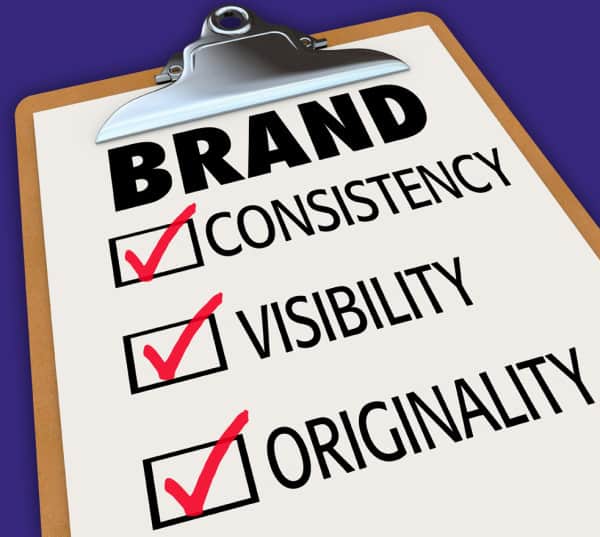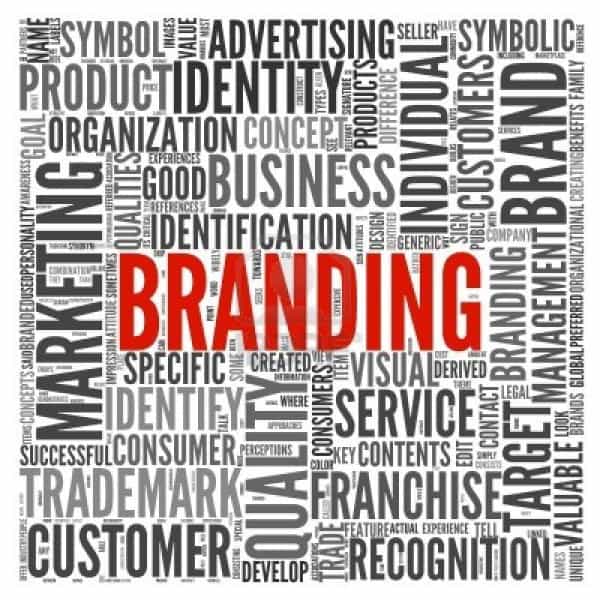If you’re not a seasoned marketing guru, then it can be difficult when trying to get your machine up and running -because honestly, where in the world do you begin?
Let’s Build Your Fitness Brand
There are so many different kinds of marketing out there: mobile, inbound, content, blog, graphic, infographic, social media, video, print, pay-per-click, and of course …ye olde newspaper (especially if you’re marketing to our friends in their golden years). And though you might have a vague idea on what’s going to work for you, there’s still the task of making it look good, consistent, and trendy.
But then there’s the deeper message, your philosophical style, that which makes your fitness business unique. It’s what you want people to say and think about your business, and not necessarily what your own business’ content is actually saying.

Ultimately, your base, your foundation, the azimuth upon which your company sets its marketing bearing will be codified in your brand. So, let’s get back to the basics for many of us out there, and for some of you, this will be review.
The Difference Between Your Fitness Business And Your Brand
I should also say this, just as a side note: most successful entrepreneurs, including fitness trainers, didn’t start off as marketers. They began with a great idea about something valuable that they could contribute to their target market, and their skills in marketing were simply well-researched, refined by trial and error, and practiced again and again over time.
So do not allow the complexities of marketing to deter you from your dreams, because it’s just something that we’ve all needed to learn.
But this brings me back to my previous point in saying that the very foundation of your marketing machine comes back to your brand and how you build it -so what is a brand? Well, according to Duct Tape Marketing’s guest poster, Ross Kimbarovsky, it’s defined as…
“A brand is the sum total of the experiences your customers and potential customers have with your company. A strong brand communicates what your company does, how it does it, and at the same time, establishes trust and credibility.”
You may want to take a look at the Fitness Business Success Formula here.
To further explain that point: your business is an established hub for currency transactions and economic growth. Your brand, however, is what consumers are saying and thinking about your business. If you’ve got a strong brand, then your target customer demographics should be the primary driver of how your brand is built.
Your brand depends on the kind of client that your fitness business wants to attract, which means that you need to determine the following in what you want:
- What is your company’s ideal niche market?
- How narrow of a focus will your brand’s niche cater to? (Tip: the higher the economic status, the more narrowly focused your niche can be -and the inverse is true on the other end of the economic spectrum.)
- What are their general demographic statistics?
- What is your geographical radius, and how will that interact with the area’s demographics?
- What are your niche’s particular tastes, opinions, and preferences.
- MOST IMPORTANT: What does your niche lack in the marketplace, and how can you address this deficiency with your brand?
Essentially, this is how you’ll be able to build a ‘client persona’. Using this as a guide, it will offer you a plumb line, a starting point, for how you continue from there. Everything in your brand starts with the client, so make sure that you build on a good foundation for your brand’s structure before you start picking out the color of your paint.
A foundation, however, will only get you so far. You’re going to need support beams; and that’s where your pillars come into the brand building process.
This will teach you how to successfully market your business as a fitness professional.

Pillar #3 – Your Look
When you think of a ‘brand’, what do you most often assign the psychological association to?
Usually it’s the logo, right?
In all reality, while logos might have some importance when it comes to branding, they’re actually apart of a much bigger puzzle. At the same time, the logo needs to remain consistent with the overall look of the company: the color scheme, the fonts you use, the images displayed on the media you’re distributing, etc.
So here are a few areas of consideration when it comes to figuring out your brand’s look:
- Colors carry certain psychological triggers. For instance, blue is safe and cooperative, green feels balanced and wealthy, red is daring and powerful, purple is mysterious and deep, etc., etc. Think about how your colors are going to interact with your niche.
- Keep it simple, clean, and uncluttered. This is one area that you’re not going to want to skimp on, because people are going to trust a professional-looking brand over one that appears to have been half hazardly constructed last Tuesday. And if it does, then your prices will be forced to reflect that factor …in which case, you’re only cheating yourself out of the profits you could’ve been making.
- Don’t get sucked into trying look like everybody else. Make your brand unique and remarkable. Let your charisma shine through your brand’s style.
Pillar #2 – Your Message to Your Clients and Prospects
Your brand’s look needs to ‘synergize’ (admittedly, I do enjoy that word) with your brand’s message. The message behind your brand goes deeper than just the words you use on the ‘about me’ section of your site; it’s ingrained in your style, your tone, and who you’re talking to.
Learn exactly where you should be marketing your personal training and fitness instruction services.
The key factor here is this: it’s not always what you say, it’s how you say it -and what people are going to say about your brand once you said it.
According to Marketing Donut, here’s a great snippet on what I’m talking about. Make sure you read between the lines here, and get a feel for exactly what they’re talking about. Take a look:
“Branding is a way of defining your business to yourself, your team and your external audiences. It could be called the business’ “identity”, but only on the understanding that it embodies the core of what the business is and its values, not just what it looks and sounds like. Customers of all sorts of businesses are so savvy today that they can see through most attempts by companies to gloss, spin or charm their way to sales.”
That’s what you’re going to need to embody in your content. Not only are you going to need an incredibly deep understanding of the niche to which you’re marketing, but you also need to know exactly what your company does, what makes it different from its competitors, and what its values are. Think of it like this…
When you’re talking to a person, the only real way to get to know them is by speaking with them. Their ‘identity’ might exist on a birth certificate, social security card, and a driver’s license -and you might also be able to get a feeling for who they might be.
But there’s no way you’re going to really get to know them until you have a conversation with that individual.
That’s what your message is all about. It’s a conversation. However, remember this as well: a conversation goes two ways. Which, brings me to the first pillar of your brand.

Pillar #1 – Your Service (or Product)
The two way conversation I was talking about will come down to your product. Your product is essentially the lynchpin that holds together the other two pillars and your foundation. This is the case, because it not only must access the fundamentals of your niche market needs -but it will also have profound influence the inner workings of your business model, your message, and your look.
Sure, you might just be another fitness trainer in a sea of countless others, but your service is your product -so you need to ask yourself these two questions when building your brand:
- What makes my service fundamentally different, remarkable, risky, and noticeable? Essentially, why should a prospective client choose you over your competitor? For example, if you were to create a list on what the differences are between Planet Fitness and Curves, then you’ll see what I’m talking about.
- What is your market’s niche, and within that niche, which customers are THE most prefered? Which ones are going to spread your name, your brand, to their followers?
Marketing mastermind, Seth Godin, writes about this topic in his book, “Purple Cow”. His point is that you want to zero in on the leaders within your niche, and do so, via your product -and ultimately, your brand. Why? It’s because they’re people of influence, and they will spread the word about your business to the masses, so you don’t have to blow your marketing budget trying to do just that:
“Differentiate your customers. Find the group that’s most profitable. Find the group that’s most likely to sneeze. Figure out how to develop/advertise/reward either group. Ignore the rest. Your ads (and your products!) shouldn’t cater to the masses. Your ads (and products) should cater to the customers you’d choose if you could choose your customers.”
Your message is how your brand talks to the masses, but that’s only your company’s side of the conversation. On the other side of the conversation, your targeted niche is saying what they want or need from your business. Their response will come in the form of your company’s profits or losses, using your service (product), as the conduit through which this communication is taking place.
Your Niche Market Will Finish the Conversation
Brilliant brand building is essentially what put the Snuggie on the map: it was developed to target a certain market with a need, the brand responded by launching an ingenious social media ad campaign, and its popularity replied by sending its sales to the moon.
The better, more attractive the conduit (ie. your service or product), the better your company will be able dialogue with the customers you’re after.
The point I’m making is that your three pillars and foundation are ALL indispensable when it comes to brand building, and the more effectively all of these parts can fit together -the easier it will be to find clients that will communicate back to you and fill your fitness training schedule to the max. Who knows, you might just want to setup franchises after that.





